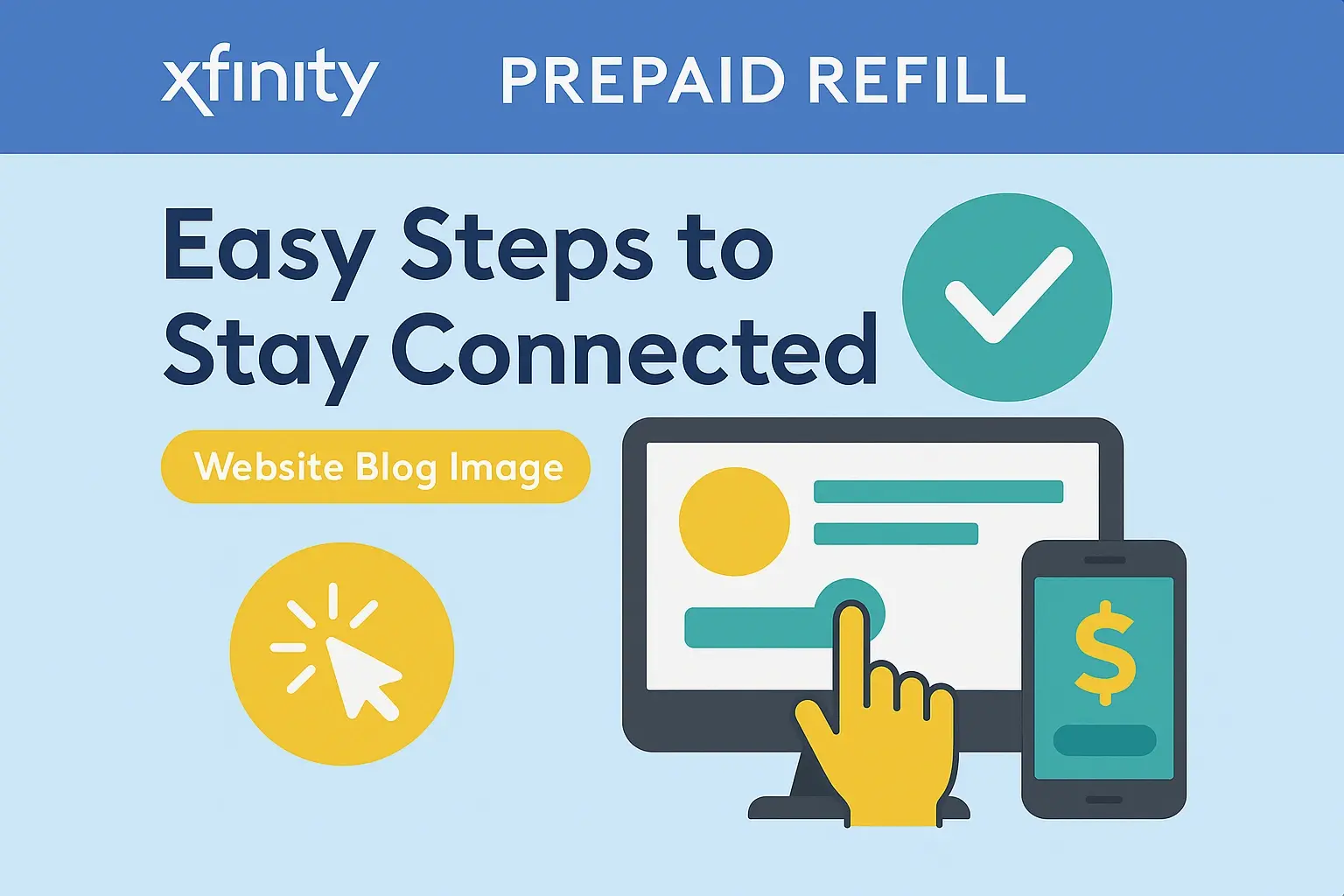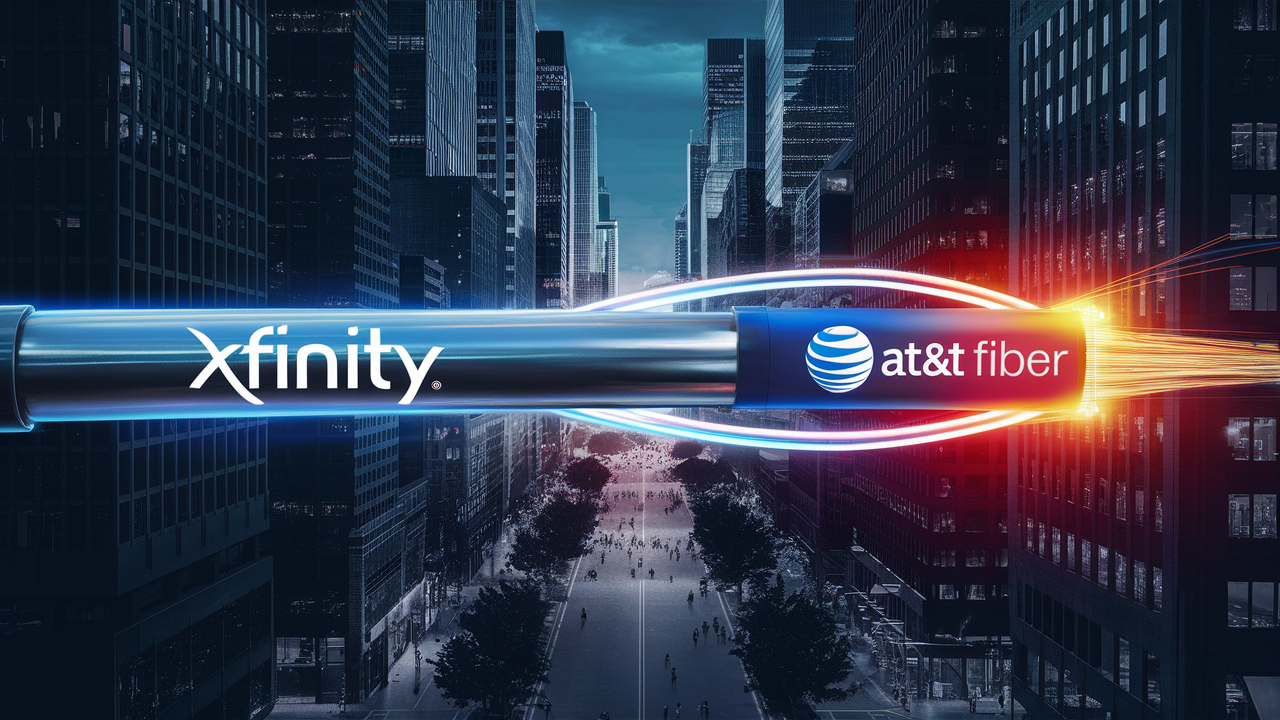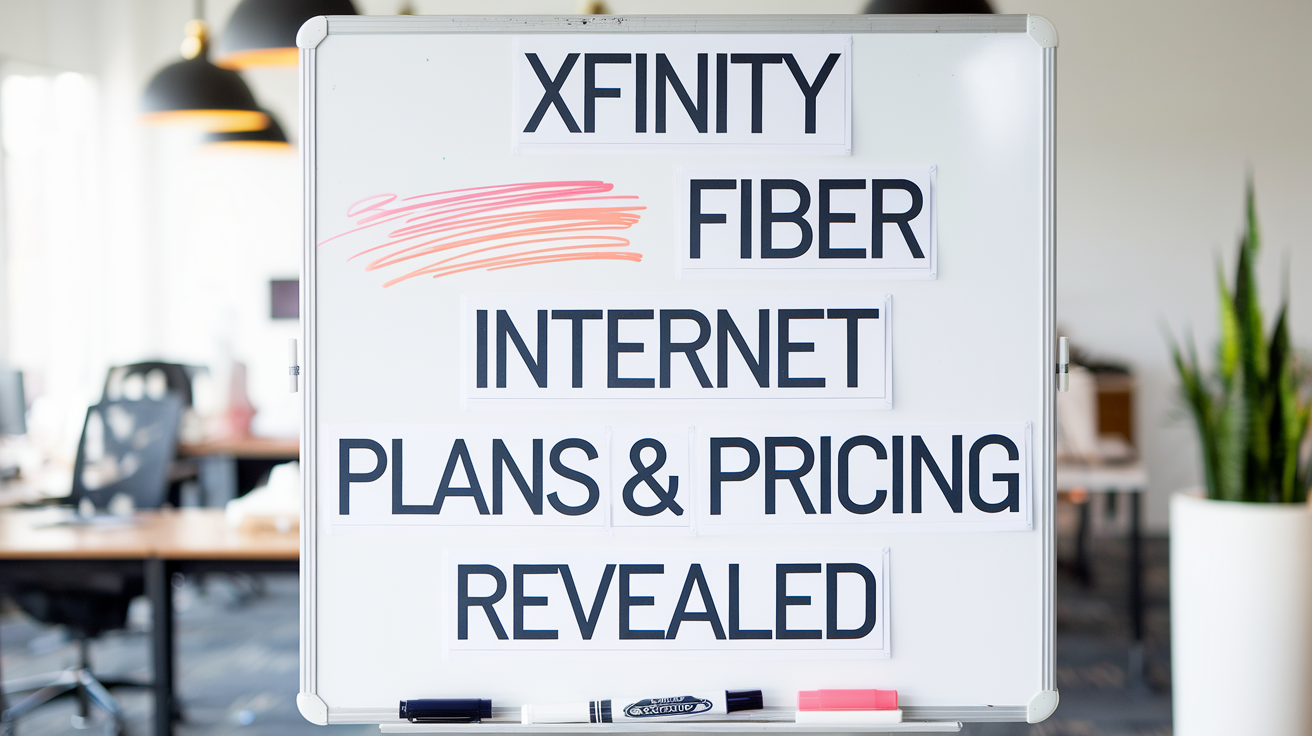Does Xfinity have local channels?
Yes, Xfinity offers local channels, but the availability and method of access depend on your specific location and the Xfinity TV package you choose. This guide will comprehensively explore how to get local channels with Xfinity in 2025.
Understanding Local Channels with Xfinity
Local channels are the bedrock of broadcast television. These are the stations that bring you local news, weather updates, community events, and programming specific to your region. For many viewers, these channels are non-negotiable when selecting a TV provider. The primary local networks include ABC, CBS, NBC, FOX, PBS, and The CW, among others, which are typically affiliated with major national networks but operate as independent entities within specific geographic markets.
When considering Xfinity, it's crucial to understand that their service is delivered via cable and internet infrastructure. This means that the availability of specific local channels is directly tied to the agreements Xfinity has with the local affiliates in your area. Unlike satellite providers, which might have a more standardized national lineup, cable providers like Xfinity are more localized in their channel offerings, particularly for over-the-air (OTA) broadcast channels.
The question "Does Xfinity have local channels?" is therefore not a simple yes or no. It's a question that requires understanding the nuances of cable distribution, local market rights, and the specific packages Xfinity offers. In 2025, Xfinity continues to be a dominant player in the pay-TV market, and their commitment to providing access to these essential local channels remains a key selling point for many households. However, the exact lineup can vary significantly from one city to another, and even within different neighborhoods in the same metropolitan area, due to the complex web of retransmission consent agreements.
Furthermore, the way these channels are accessed can differ. Some may be available in standard definition (SD), while others are increasingly offered in high definition (HD). The transition to HD has been ongoing for years, and most major local affiliates are now broadcast in HD. Xfinity’s ability to carry these HD signals depends on their infrastructure and licensing agreements. Understanding these factors will help you determine if Xfinity is the right choice for your local channel needs.
The content provided by these local channels is invaluable. Local news programs offer in-depth coverage of events impacting your community, from political developments and economic trends to crime and public safety. Weather forecasts are tailored to your specific region, providing critical information for daily planning and emergency preparedness. Beyond news, local stations often broadcast high school sports, community forums, and programming that reflects the unique culture and interests of their viewership. For many, the ability to tune into these familiar voices and faces is a significant part of feeling connected to their community. This is why ensuring Xfinity provides these channels is paramount for a significant portion of their subscriber base.
The regulatory landscape also plays a role. The Federal Communications Commission (FCC) mandates that cable operators carry certain local broadcast signals. This is known as "must-carry" rules. However, these rules are complex and have evolved over time, influencing which channels are carried and under what conditions. Xfinity, as a major cable provider, must adhere to these regulations, but the specifics of implementation can still lead to variations in channel lineups.
In essence, while Xfinity generally aims to provide local channels, the definitive answer for any given user hinges on their precise geographic location and the prevailing carriage agreements. This exploration will delve into the specifics of how Xfinity manages these essential broadcast signals and what you can expect as a subscriber.
How Xfinity Delivers Local Channels
Xfinity delivers local channels primarily through its cable television service. This involves a sophisticated network of infrastructure that receives broadcast signals and then distributes them to subscribers' homes. The process is more involved than simply picking up an over-the-air signal with an antenna, as it requires specific agreements and technical capabilities.
At its core, Xfinity acts as an intermediary. Local broadcast stations, which are often independently owned and operated but affiliated with national networks (like ABC, CBS, NBC, FOX), transmit their signals over the air. For Xfinity to carry these channels on its cable system, the company must negotiate a retransmission consent agreement with each local station owner. These agreements grant Xfinity the right to retransmit the station's signal to its cable subscribers.
Retransmission Consent: The Key Negotiation
This negotiation process is critical. Local broadcasters have the right to decide whether to grant cable operators permission to carry their signals. If they choose not to grant permission, they can demand payment (retransmission fees) for the right to carry their signal. These fees are a significant revenue stream for broadcasters and a major cost for cable companies. The outcome of these negotiations directly impacts which local channels appear on Xfinity's lineup. If an agreement cannot be reached, a local channel may be dropped from Xfinity's service, leading to viewer frustration and often public outcry.
Must-Carry Rules and Localism
In addition to retransmission consent, Xfinity is also subject to the FCC's "must-carry" rules. These rules stipulate that cable operators must carry all local full-power broadcast television stations that elect must-carry status. However, there are nuances. For instance, if a station chooses not to accept retransmission fees and instead elects must-carry, Xfinity is obligated to carry it. If a station demands retransmission fees, the negotiation process outlined above takes precedence. The FCC's rules are designed to ensure that viewers have access to local programming, but the complexities of retransmission consent often lead to disputes.
HD vs. SD Availability
In 2025, the vast majority of major local channels are broadcast in High Definition (HD). Xfinity generally carries these HD signals. However, the specific HD channel number can vary by region. Some older or smaller local affiliates might still broadcast in Standard Definition (SD), or Xfinity might offer an SD version on a different channel number. For the best viewing experience, ensuring your Xfinity package includes the HD versions of local channels is recommended.
Delivery Methods: Cable and Internet Integration
Xfinity's delivery of local channels is primarily through its coaxial cable network. However, with the increasing integration of internet services, some Xfinity TV packages might also leverage IP (Internet Protocol) delivery for certain channels, especially for streaming via the Xfinity Stream app or Xfinity Flex boxes. This means that even if you're not using a traditional Xfinity cable box, you might still be able to access local channels through their streaming platforms, provided your internet service is with Xfinity and your location qualifies.
Geographic Limitations
The most significant factor influencing local channel availability is your geographic location. Xfinity tailors its local channel lineup based on the designated market area (DMA) in which you reside. A DMA is a geographic area used by the media industry to define television and radio market sizes. Xfinity must secure agreements with the specific local stations operating within your DMA. This is why a channel available in one city might not be available in another, even if they are in the same state.
Xfinity Stream App and Flex Box
For subscribers who use the Xfinity Stream app on compatible devices (smart TVs, streaming sticks) or the Xfinity Flex streaming TV Box, local channels are often accessible. These platforms can stream local channels directly to your devices, effectively acting as a digital antenna or cable box replacement for live TV. The availability of local channels on these platforms is still tied to your Xfinity subscription and your geographic location, but it offers a more flexible viewing experience.
Verifying Local Channel Availability
The most reliable way to determine which local channels are available to you is to:
- Visit the Xfinity website and enter your address. The site will then display available packages and channels specific to your location.
- Contact Xfinity customer service directly. They can provide a precise channel lineup for your address.
- Check your Xfinity channel guide if you are already a subscriber.
Understanding these delivery mechanisms and the underlying negotiations helps clarify why local channel availability is not uniform and why checking your specific location is always the best first step.
Xfinity TV Packages and Local Channels
Xfinity offers a tiered system of TV packages, and the inclusion of local channels is generally a standard feature across most of them, especially for the most popular networks. However, the specifics of which local channels are included, and in what definition (HD/SD), can depend on the package tier and your location. For 2025, Xfinity continues to bundle essential local channels into their entry-level packages, recognizing their importance to the average viewer.
Entry-Level Packages (e.g., Digital Starter, Broadcast TV)
Even Xfinity's most basic TV packages typically include the major local broadcast networks: ABC, CBS, NBC, FOX, and PBS. These are considered fundamental channels that most viewers expect. These packages are designed to provide the core viewing experience, and local channels are a critical component of that. The availability of these channels in HD will depend on your specific market, but Xfinity generally prioritizes providing HD versions when available and licensed.
Mid-Tier Packages (e.g., Digital Preferred, Performance TV)
As you move up to mid-tier packages, you'll find the same core local channels included. The primary difference in these packages is the addition of more popular cable networks (like ESPN, HGTV, Discovery Channel, etc.) and potentially more premium channels. The local channel lineup itself usually remains consistent with the entry-level packages. Xfinity aims to ensure that subscribers at all levels have access to the local news and programming they need.
Premium Packages (e.g., Ultimate TV)
The highest tiers of Xfinity TV packages also include all the standard local channels. The value proposition of these packages lies in the vast array of sports, entertainment, movie, and international channels they offer, along with premium channel subscriptions like HBO, Showtime, or Cinemax. Local channels are a given, ensuring that subscribers don't have to sacrifice essential programming for expanded choices.
Xfinity Flex and Xfinity Stream App Considerations
It's important to note how local channels are accessed through Xfinity Flex and the Xfinity Stream app. These platforms can stream local channels if they are part of your subscribed Xfinity TV package and are available in your geographic area. For instance, if you subscribe to Xfinity's Digital Starter package and your local ABC affiliate is available, you should be able to watch it via the Stream app on your phone or through the Flex box connected to your TV. This offers a modern way to access traditional broadcast content.
Factors Affecting Local Channel Availability within Packages
- Geographic Location: This is the most significant factor. Xfinity's agreements with local broadcasters are market-specific. What's available in New York City might not be available in Los Angeles or a rural town.
- Retransmission Disputes: Occasionally, Xfinity and local broadcasters fail to reach a retransmission agreement. During these periods, local channels may be temporarily removed from the lineup. Xfinity will usually notify subscribers if this is expected to happen.
- Package Tier vs. Local Channels: While Xfinity bundles local channels into most packages, the *number* of local channels might slightly vary in extremely rare cases for highly specialized or regional packages. However, for standard residential packages, the major networks are almost always included.
- HD Availability: While most major local channels are in HD, the specific HD channel number can vary. Xfinity's packages are designed to include these HD feeds when available.
How to Check Your Specific Package and Local Channels
The most accurate way to determine which local channels are included in Xfinity TV packages for your specific address is to:
- Visit Xfinity's Official Website: Go to Xfinity.com and navigate to the TV section. Enter your home address. The website will then present you with available TV packages and a detailed channel lineup for your area. This is the most direct and up-to-date method.
- Use the Xfinity My Account App: If you are an existing Xfinity customer, the My Account app provides access to your current subscription details, including your channel lineup.
- Contact Xfinity Customer Service: You can call Xfinity directly and speak with a representative who can look up your address and provide specific information about local channel availability and package inclusions.
Example Scenario (Hypothetical 2025 Data)
Let's consider a hypothetical subscriber in a mid-sized city in 2025:
- Xfinity Digital Starter Package: Includes local channels like WXYZ (ABC), WQED (CBS), WPXI (NBC), KDKA (FOX), and WQED-TV (PBS) in HD. Also includes basic cable networks like CNN, MSNBC, and USA Network.
- Xfinity Digital Preferred Package: Includes all the local channels from the Starter package, plus a wider array of cable networks like ESPN, HGTV, TNT, and AMC.
In both scenarios, the core local channels are present. The decision on which package to choose would likely be based on the subscriber's interest in non-local cable networks rather than the availability of local broadcast stations.
In summary, Xfinity generally ensures that its TV packages include the essential local channels. The primary determinant of what you receive is your geographic location, followed by the specific package you select, with higher tiers offering more cable networks but typically not altering the fundamental local channel lineup.
Alternatives to Xfinity for Local Channels
While Xfinity is a major provider, it's not the only way to access local channels. For consumers looking for alternatives, or for those who find Xfinity's pricing or service unsuitable, several other options exist. These alternatives vary in cost, channel selection, and delivery method, offering different benefits depending on your priorities. In 2025, the landscape of TV delivery continues to evolve, with streaming services and over-the-air reception becoming increasingly viable.
1. Over-the-Air (OTA) Antennas
How it works: Local broadcast channels transmit their signals freely over the airwaves. With a digital TV antenna, you can pick up these signals directly. The quality of reception depends on the antenna's type (indoor, outdoor, amplified), your distance from the broadcast towers, and any physical obstructions.
Pros:
- Free: Once you purchase the antenna, there are no monthly fees for local channels.
- High Definition: Most major local channels broadcast in HD, providing excellent picture quality.
- Local Content: You get the exact local channels broadcast in your market.
- Reliability: Not subject to cable company retransmission disputes.
Cons:
- Limited Channels: You only get channels broadcasting in your area. National cable networks (like ESPN, CNN, etc.) are not available.
- Equipment Cost: Initial purchase of an antenna is required.
- Reception Issues: Performance can be affected by weather, terrain, and building materials.
- No DVR: Typically requires a separate DVR if you want to record shows.
Cost (2025 Estimate): $30 - $150 for an antenna, depending on type and range.
2. Live TV Streaming Services
These services offer a bundle of channels, including many local broadcast networks, delivered over the internet. They are a popular alternative to traditional cable and satellite.
Popular Options (2025):
- YouTube TV: Known for its comprehensive local channel lineup (ABC, CBS, NBC, FOX) in most markets, unlimited cloud DVR, and a user-friendly interface.
- Hulu + Live TV: Also offers major local networks in most areas, bundled with Hulu's on-demand library and a cloud DVR.
- Sling TV: Offers a more à la carte approach. Local channels (ABC, CBS, NBC, FOX) are available in select markets via its "Blue" or "Orange + Blue" packages, often requiring specific add-ons or regional availability. DVR is available for an extra fee.
- DirecTV Stream (formerly AT&T TV): Provides a wide range of packages, often including local channels, and offers a choice between streaming and satellite delivery.
Pros:
- Convenience: Accessible on various devices (smart TVs, streaming sticks, computers, mobile).
- Flexibility: Month-to-month subscriptions, no long-term contracts typically.
- Cloud DVR: Most services offer cloud DVR functionality.
- Broader Channel Selection: Includes many popular cable networks alongside locals.
Cons:
- Internet Dependent: Requires a stable, high-speed internet connection.
- Potential for Price Increases: Subscription costs can rise over time.
- Local Channel Availability Varies: Not all services carry all local channels in every market.
- Data Caps: If your internet provider has data caps, streaming live TV can consume significant data.
Cost (2025 Estimate): $50 - $100+ per month, depending on the service and package.
3. Satellite TV Providers (e.g., DirecTV, Dish Network)
Satellite providers also offer local channels, often through agreements with national networks that have local affiliates. Like cable, their availability is geographically dependent.
Pros:
- Wide Channel Selection: Often offer extensive channel lineups.
- HD Availability: Local channels are typically available in HD.
- National Reach: Can be available in areas where cable is not.
Cons:
- Long-Term Contracts: Usually require 1-2 year contracts.
- Equipment Rental Fees: Monthly fees for satellite dishes and receivers.
- Weather Interference: Signal can be disrupted by heavy rain or snow.
- Retransmission Disputes: Still subject to disputes with local broadcasters.
- Installation: Requires professional installation.
Cost (2025 Estimate): $65 - $120+ per month, often with introductory offers that increase after a promotional period.
4. Other Cable Providers
Depending on your location, other local or regional cable companies might offer services. Their channel lineups and pricing structures will vary.
Comparison Table: Local Channel Access Options
| Provider/Method | Local Channels Included? | Typical Monthly Cost (2025 Est.) | Contract Required? | Pros | Cons |
|---|---|---|---|---|---|
| Xfinity | Yes (market dependent) | $50 - $100+ | Often 1-2 years (can vary) | Bundled with internet/phone, HD locals, Stream app/Flex box | Contract lock-in, potential price hikes, market-specific availability |
| OTA Antenna | Yes (all available in market) | $30 - $150 (one-time) | No | Free after purchase, excellent HD, no monthly fees | Only locals, reception issues, no DVR |
| YouTube TV | Yes (most markets) | $70 - $80 | No | Unlimited cloud DVR, broad channel mix, no contract | Internet dependent, price can increase |
| Hulu + Live TV | Yes (most markets) | $70 - $85 | No | Bundled with Hulu VOD, cloud DVR, no contract | Internet dependent, price can increase |
| Sling TV | Yes (select markets/packages) | $40 - $60+ | No | Flexible packages, lower base price | Local availability limited, DVR extra, fewer channels in base |
| DirecTV Stream | Yes (market dependent) | $70 - $160+ | Often 2 years | Extensive channel options, streaming/satellite choice | Long contracts, high cost, weather impact (satellite) |
| Dish Network | Yes (market dependent) | $60 - $110+ | Often 2 years | Bundled offers, Hopper DVR | Long contracts, price increases, weather impact |
Choosing the Right Alternative
The best alternative for you depends on your specific needs:
- For Budget-Conscious Viewers: An OTA antenna is the most cost-effective long-term solution if you only need local channels.
- For Cord-Cutters Wanting Live TV: YouTube TV or Hulu + Live TV offer a good balance of local and cable channels with modern features like cloud DVR and no contracts.
- For Those Needing Broad Channel Selection Without Cable Contracts: DirecTV Stream or Dish Network might be considered, but be mindful of contract terms and potential price hikes.
It's always recommended to check the specific channel lineups for your address on the provider's website before committing to any service. Understanding these alternatives ensures you can make an informed decision about how to access local channels, whether through Xfinity or another provider.
Troubleshooting Local Channel Issues
Even with a service like Xfinity, issues with local channels can arise. These problems can range from missing channels to poor picture quality. Fortunately, most common troubleshooting steps are straightforward and can often be resolved without needing to contact customer support. In 2025, as digital signals and streaming integration become more prevalent, understanding these troubleshooting methods is crucial for a seamless viewing experience.
1. Verify Local Channel Availability for Your Address
The first and most critical step is to confirm that the local channels you are missing are actually supposed to be available in your specific geographic area. As discussed, Xfinity's local channel lineup is highly dependent on your location and the agreements they have with local broadcasters.
- Action: Visit the Xfinity website, enter your full address, and check the channel lineup for your area. Alternatively, call Xfinity customer service.
- Why it helps: This eliminates the possibility that the channel is simply not offered in your DMA, saving you from unnecessary troubleshooting.
2. Check Your Xfinity TV Package
Ensure that the specific local channel is included in the Xfinity TV package you are subscribed to. While most basic packages include major networks, there might be exceptions for certain smaller affiliates or specific regional channels.
- Action: Review your Xfinity bill or log in to your account online to see your current package details. Compare this to the channel lineup for your area.
- Why it helps: Confirms that your subscription level covers the channels you expect to receive.
3. Reboot Your Xfinity Equipment (Cable Box/Modem)
Like any electronic device, Xfinity equipment can sometimes experience temporary glitches that affect channel reception. A simple reboot can often resolve these issues.
- Action:
- Unplug the power cord from your Xfinity cable box and/or modem.
- Wait for at least 30 seconds.
- Plug the power cord back in.
- Allow the equipment to fully restart (this can take several minutes).
- Why it helps: This process refreshes the device's connection to the Xfinity network and can clear temporary software errors.
4. Check Your Cable Connections
Loose or damaged coaxial cable connections can lead to signal loss and affect picture quality, including for local channels.
- Action:
- Ensure the coaxial cable is securely screwed into the back of your Xfinity box and the wall outlet.
- Check the cable for any visible damage (kinks, cuts, frayed ends).
- If you have splitters, ensure they are also securely connected.
- Why it helps: A solid connection is vital for receiving a clear signal.
5. Scan for Channels (for Xfinity Stream App/Flex Box Users)
If you are using the Xfinity Stream app or the Xfinity Flex box, the system might need to rescan for available channels.
- Action: Navigate to the settings menu on your Xfinity Stream app or Flex box and look for an option like "Channel Scan," "Rescan," or "Resync Channels." Follow the on-screen prompts.
- Why it helps: This ensures your device has the most up-to-date list of available channels from Xfinity's network.
6. Check for Service Outages in Your Area
Sometimes, local channel issues are due to broader service interruptions affecting your neighborhood.
- Action: Use the Xfinity My Account app or visit the Xfinity website to check for reported outages in your area.
- Why it helps: If there's an outage, troubleshooting your equipment won't help; you'll need to wait for Xfinity to resolve the issue.
7. Check for Retransmission Disputes
As mentioned, local channels can be temporarily removed from Xfinity's lineup if Xfinity and the local broadcaster cannot agree on retransmission fees. Xfinity usually provides advance notice, but it's worth checking if a dispute is ongoing.
- Action: Check the Xfinity website or news outlets for any announcements regarding retransmission consent disputes in your market.
- Why it helps: If a dispute is active, the channel will likely remain unavailable until an agreement is reached.
8. Verify HD Equipment and Settings
If local channels are missing in HD, ensure your equipment and TV settings are configured correctly.
- Action:
- Confirm your Xfinity TV package includes HD channels.
- Ensure your TV is set to the correct aspect ratio (e.g., 16:9).
- Check that you are tuning to the HD channel number for the local station.
- Why it helps: Incorrect settings or package limitations can prevent you from seeing HD local channels.
9. Contact Xfinity Customer Support
If you've tried the above steps and are still experiencing issues with local channels, it's time to contact Xfinity.
- Action: Call Xfinity customer support or use their online chat feature. Be prepared to provide details about the specific channels you're missing and the troubleshooting steps you've already taken.
- Why it helps: Xfinity support can perform remote diagnostics, check your signal strength, and schedule a technician visit if necessary.
10. Consider Alternatives if Issues Persist
If Xfinity consistently fails to provide the local channels you need, or if you frequently encounter issues, you might want to re-evaluate your provider. As detailed in the "Alternatives" section, an OTA antenna or a live TV streaming service could be a more reliable solution for accessing local content.
By systematically working through these troubleshooting steps, you can effectively address most problems related to missing or poor-quality local channels on Xfinity. Remember that patience and clear communication with Xfinity support are key when issues cannot be resolved independently.
Optimizing Your Xfinity Experience for Local Content
Accessing local channels with Xfinity is about more than just having them available; it's about making them easy to find and enjoy. Whether you're tuning in for the nightly news, a local sports broadcast, or a community event, optimizing your Xfinity experience ensures you don't miss out. In 2025, with the integration of smart features and streaming capabilities, there are several ways to enhance how you interact with your local programming.
1. Utilize the Xfinity Channel Guide Effectively
The Xfinity channel guide is your primary tool for navigating available channels. Learning to use its features can save you time and frustration.
- Favorites: Mark your most-watched local channels (e.g., your preferred local news station for ABC, CBS, NBC, FOX) as favorites. This allows you to quickly jump to them using a dedicated "Favorites" filter or by pressing a specific button on your remote.
- Search Functionality: Most Xfinity remotes have a voice command feature or a search bar within the guide. Use this to quickly find a specific local channel by name or channel number.
- Filtering: Explore the guide's filtering options. You can often filter by "Local Channels" or "Broadcast Channels" to see only the relevant stations, making it easier to find them amongst the hundreds of other cable channels.
2. Leverage the Xfinity Stream App and Flex Box
These platforms offer a modern way to access local channels, often with enhanced convenience.
- Accessibility: Watch local channels on your smart TV, tablet, or phone using the Stream app, even outside your home (though local channel availability may be restricted by location when away). The Flex box brings these streaming capabilities directly to your main TV.
- Integrated Experience: The Stream app and Flex box often integrate local channel listings directly into their on-screen guides, making them as easy to access as any other channel.
- Voice Control: Use voice commands with the Xfinity Voice Remote to tune directly to local channels ("Tune to Channel 6," "Show me local news").
3. Set Up Reminders and DVR Recordings
Never miss an important local news segment or program again.
- Program Reminders: Use your Xfinity guide to set reminders for upcoming local shows. Your box will alert you when the program is about to start.
- DVR Functionality: If your Xfinity package includes a DVR (like the X1 DVR), you can record local news broadcasts, sports events, or other programs to watch at your convenience. This is particularly useful if you can't tune in live due to work or other commitments.
4. Understand Local News and Programming Schedules
Knowing when your favorite local news programs or shows air will help you tune in at the right time. Most Xfinity guides display the full schedule, but you can also check the websites of your local affiliate stations.
- Action: Bookmark the websites of your local ABC, CBS, NBC, and FOX affiliates. They usually have their daily and weekly programming schedules posted.
- Why it helps: Proactive planning ensures you don't miss critical local updates or community-focused content.
5. Ensure Optimal Signal Quality
While Xfinity generally provides a strong signal, occasional interference can affect picture quality, especially for local channels that might be broadcast at different frequencies or power levels.
- Check Connections: Regularly ensure all coaxial cable connections are tight and secure.
- Minimize Interference: Keep electronic devices that can cause interference (like microwaves or cordless phones) away from your Xfinity equipment.
- Report Issues: If you consistently experience poor picture quality or pixelation on local channels, contact Xfinity support. They can check your signal strength remotely and dispatch a technician if needed.
6. Stay Informed About Local Events and Programming
Local channels are your gateway to community happenings. Actively seek out programming that interests you.
- Community Calendars: Many local news websites feature community calendars or announce upcoming local events that will be covered on TV.
- Public Affairs Programs: Look for local public affairs shows that discuss important community issues, often aired on PBS affiliates or during weekend mornings on other networks.
7. Provide Feedback to Xfinity
If you notice any changes in your local channel lineup or have suggestions for how Xfinity could improve access to local content, consider providing feedback through their customer service channels or online forums. While individual feedback might not always lead to immediate changes, collective feedback can influence service improvements.
By implementing these strategies, you can ensure that your Xfinity service provides a robust and convenient way to access the local channels that matter most to you. From quick tuning with favorites and voice commands to recording your favorite news programs, optimizing your experience makes staying connected to your community easier than ever.
In conclusion, the answer to "Does Xfinity have local channels?" is a resounding yes, with the caveat that availability is geographically dependent. Xfinity generally includes major local broadcast networks like ABC, CBS, NBC, and FOX in most of its TV packages, recognizing their essential nature for viewers. The delivery mechanism involves complex retransmission consent agreements between Xfinity and local broadcasters, which can occasionally lead to temporary channel blackouts if agreements are not reached. However, for the vast majority of subscribers in 2025, these crucial channels are readily accessible, often in high definition.
To confirm availability for your specific address, checking the Xfinity website or contacting customer service is the most reliable method. Troubleshooting common issues like missing channels or poor quality often involves simple steps such as rebooting equipment, checking connections, or verifying your package and channel lineup. Furthermore, optimizing your Xfinity experience by utilizing features like channel favorites, voice control, the Stream app, and DVR recording can significantly enhance how you access and enjoy local content. If Xfinity consistently fails to meet your local channel needs, alternatives like over-the-air antennas or live TV streaming services offer viable solutions.





